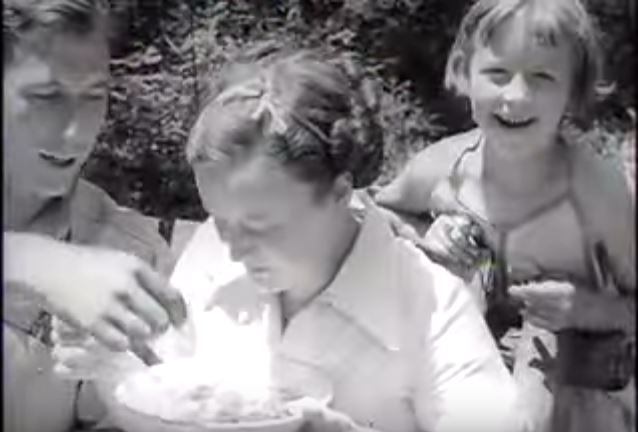Culturally, we like to celebrate parks. We like to hold them up as bastions of altruistic preservation and outdoor democratization. Right now we are even holding up national parks as leaders of the capital “R”#Resistance. Parks are complicated, though. Parks are not innocuous. It is difficult to bring up the problems with parks at a time when their very existence is compromised, but to ignore past and present park issues does nothing to ensure their future.
Parks are products of the social conditions in which they were created and maintained. Some of the scattered historical videos available on YouTube and elsewhere provide invaluable and accessible windows into the problematic past of parks. The gendered aspect of parks is one issue that becomes more vivid when watching many of these park videos, in contrast to staring at park documents.
One pattern in historic park videos is the objectification of women. One of my favourite (for lack of a better term) examples of this is in the below video, “West Virginia Recreation Resources – 1935.”
This video is a gem of the past and contains many analyzable details, but for the purpose of this post I’m going to focus on the creepily sexist aspects.
-Around (11:35) the video cuts to a picnic scene. The narrator then states, “They raise them lovely in West Virginia’s hills…one natural resource that can’t be exhausted. One crop that never fails,” and the footage cuts to seemingly grown men feeding and giggling with very young, pubescent and teenage girls.
-(12:38) The video footage then moves to a swimming hole for scenes of “old-fashioned fun,” focusing on a buxom babe or as the narrator states: “streamlined trainers.”
-At (13:04) the old-fashioned fun moves to some good ol’ fashioned fat-shaming. Footage of a young girl preparing to jump in the swimming hole is accompanied by the commentary, “some like them short, some like them tall, and some like them big and round.” A short time later, the video-editor actually whipped up some early rewind technology to make the “Hold your hats boys, here we go again…warn you she’s a backin’ up” joke.
So what is the significance of these three scenes? The three scenes demonstrate that women were viewed as part of the scenery. By literally referring to young girls as “crops,” the film treats women as a natural resource that is managed for the use and pleasure of men in a similar way to the parkland. This film demonstrates the fact that parks were not automatic sanctuaries from the pressure’s of society for all people.
I’d love to explore this topic further, but for now, this will do. Have any of you come across any similar instances of sexism in park history sources?
UPDATES (Some comments and other sources from my Twitter network):


I don’t know if this counts – but as a young girl just getting her first period I was terrified by the bear safety pamphlets that they were handing out at Banff national park (this would have been about 1987) which warned that menstruating women could attract bears. So, all these weird things are happening to my body and now I going to ATTRACT BEARS on top of all of it? And I wonder…are menstruating women an actual bear safety issue…or is this a subtle form of social control by making women nervous that their normal body functions bodies will put them in danger?
LikeLiked by 1 person
Thanks for sharing this anecdote, Kristin. I think there is definitely a connection and that there is a gendered aspect to the way in which “wilderness” experiences are managed. Your story makes me think of Jess Dunkin’s NiCHE piece on menstruation and summer camp canoe trips, “Will you be sick during the time of the trip?”: http://niche-canada.org/2016/04/20/will-you-be-sick-during-the-time-of-the-trip/
I’ve been surprised by how many instances of explicit instances of sexism that I’ve come across in early park records. For instance, in Algonquin Provincial Park the early park rangers were not allowed to have families because Algonquin was a not a place for women and families. Algonquin was to be used and enjoyed by only men. I wish I had had this issue in mind when initially planning my dissertation. I suppose there will always be future projects!
LikeLiked by 1 person
I also noticed the closing comment on this video “….and the moon comes up…” right as the camera showed the rear view of the woman diving.
LikeLiked by 1 person
Oh my, I didn’t notice that one! This is exactly why I like to share these things with others, everyone notices different details.
LikeLike